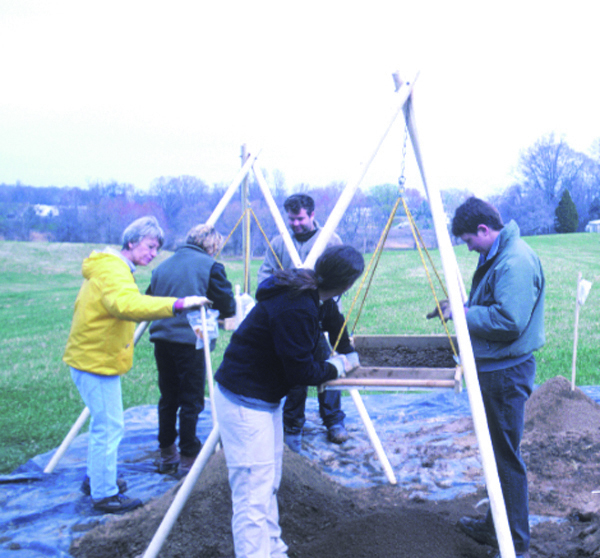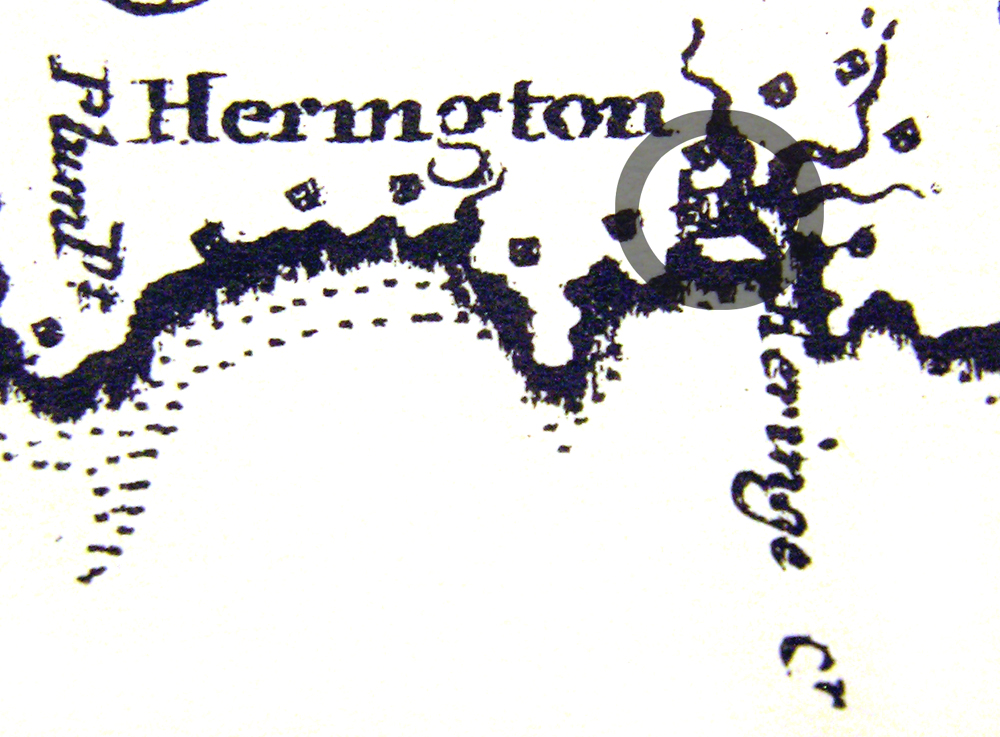The Lost Towns Project conducted an extensive archaeological survey of the suspected site of the town of Herrington in 2001. Perhaps the second oldest settlement in the County, historical research along with several diagnostic artifacts indicate that Herrington not only;y survives, but may date as early as the 1650s. The 100-acre survey project centered on an area that is still known as “Town Point” in southern Anne Arundel County, Maryland. The excavation of 600 shovel test pits eventually identified a total of six archaeological sites, including one prehistoric, two 19th century, and three multi-component sites including two with 17th century occupations. A large concentration of 17th century diagnostics was found in close proximity to active and relic springheads and a probable town-period road.
Herrington was among the earliest settlements in Anne Arundel County and the Maryland colony. Located in Southern Anne Arundel County, it was settled by the same group of Protestant dissenters who inhabited the banks of the Severn River in the ca. 1649 Providence settlement. The origins of the Herrington may extend as far back as 1651. During the 1660s, Herrington functioned in several important public capacities, notably as an official port of entry and the site of a burgess election. Herrington was listed in the 1669 ordinance establishing official locations for the passage of both imported and exported goods, as well as the 1671 declaration requiring the unloading of cargo at specific locations. The fact that a 1668 burgess election was held at Herrington a month before passage of the 1669 ordinance makes it possible to speculate whether the town was physically in existence in 1668 or even erroneously left off the towns listed in the original 1668 Proclamation. Herrington was also among the 31 tobacco port towns legislated by the Maryland General Assembly in 1683. Unfortunately, there is no reference in the written record that would explain the gradual demise of this once important tobacco port. Like many other legislatively enacted Chesapeake towns, this early settlement disappeared from the landscape for reasons not yet fully understood.
Read an article about the Herrington excavations by clicking here


